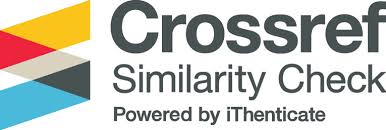Antifungal Activity Test of n-Hexane, Ethyl Acetate, and Water of Papaya Leaf (Carica Papaya Linn.) against Candida albicans ATCC 10231
Abstract
Papaya leaf (Carica papaya, Linn) contains alkaloid, saponin and flavonoid. Papaya leaf can be used for treating whiteness, increasing appetite, treating malaria. The objective of this research is to find out the activity of macerate, n-hexane, ethyl-acetate, and water fractions of papaya leaf (Carica papaya, Linn) as antifungal agent to Candida albicans ATCC® 10231, the primary cause of candidiasis. The papaya leaf powder was macerated using ethanol 70%, that was then concentrated, followed with fractionation using water, ethyl acetate, and n-hexane solvent. The method employed in this research was dilution (tube dilution), method of antifungal test was conducted by dilution method a series of dilutions in various concentrations 100%; 50%; 25%; 12,5%; 6,25%; 3,12%; 1,56%; 0,78%; 0,39%; dan 0,195%(b/v). The result of research showed that ethyl acetate fraction of papaya leaf hs the most effective antifungal activity compared with the macerate, n-hexane and water fractions. Ethyl acetate fraction has Minimum Killing Concentration of 25% (b/v), macerate and n-hexane fraction have Minimum Killing Concentration of 50% (b/v), and water fraction does not have Minimum Killing Concentration on Candida albicans ATCC 10231.












